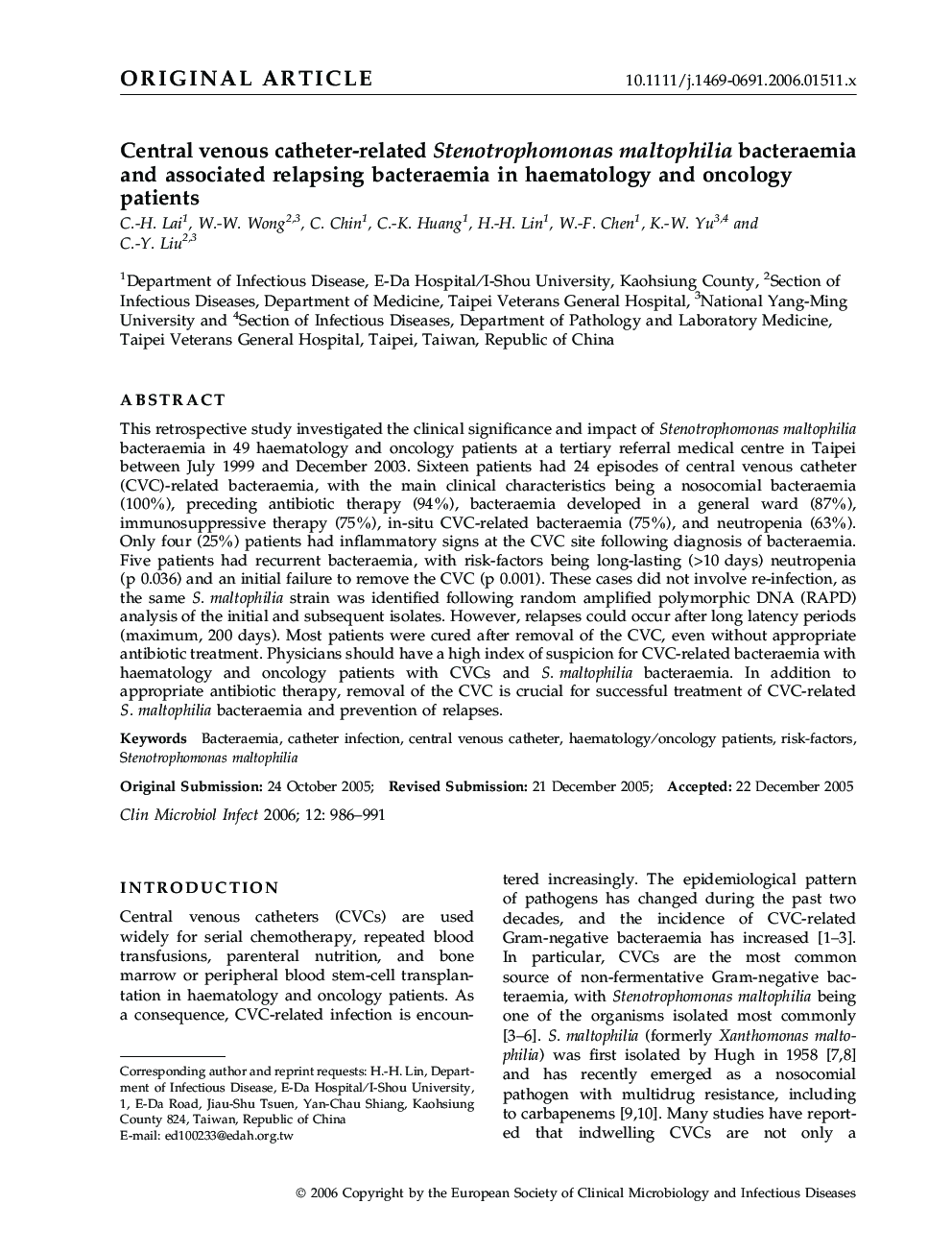| Article ID | Journal | Published Year | Pages | File Type |
|---|---|---|---|---|
| 3398564 | Clinical Microbiology and Infection | 2006 | 6 Pages |
ABSTRACTThis retrospective study investigated the clinical significance and impact of Stenotrophomonas maltophilia bacteraemia in 49 haematology and oncology patients at a tertiary referral medical centre in Taipei between July 1999 and December 2003. Sixteen patients had 24 episodes of central venous catheter (CVC)-related bacteraemia, with the main clinical characteristics being a nosocomial bacteraemia (100%), preceding antibiotic therapy (94%), bacteraemia developed in a general ward (87%), immunosuppressive therapy (75%), in-situ CVC-related bacteraemia (75%), and neutropenia (63%). Only four (25%) patients had inflammatory signs at the CVC site following diagnosis of bacteraemia. Five patients had recurrent bacteraemia, with risk-factors being long-lasting (>10 days) neutropenia (p 0.036) and an initial failure to remove the CVC (p 0.001). These cases did not involve re-infection, as the same S. maltophilia strain was identified following random amplified polymorphic DNA (RAPD) analysis of the initial and subsequent isolates. However, relapses could occur after long latency periods (maximum, 200 days). Most patients were cured after removal of the CVC, even without appropriate antibiotic treatment. Physicians should have a high index of suspicion for CVC-related bacteraemia with haematology and oncology patients with CVCs and S. maltophilia bacteraemia. In addition to appropriate antibiotic therapy, removal of the CVC is crucial for successful treatment of CVC-related S. maltophilia bacteraemia and prevention of relapses.
